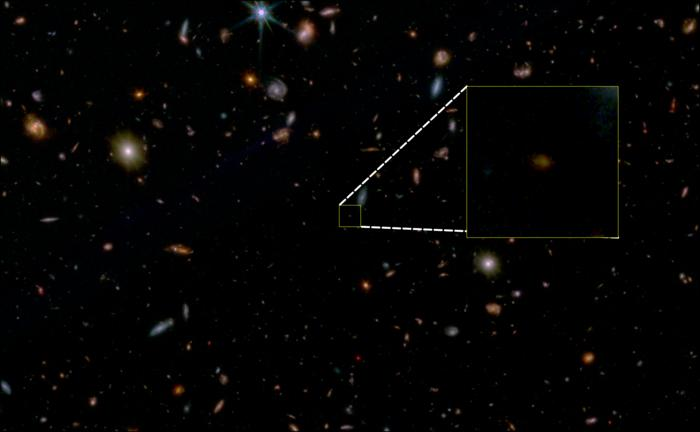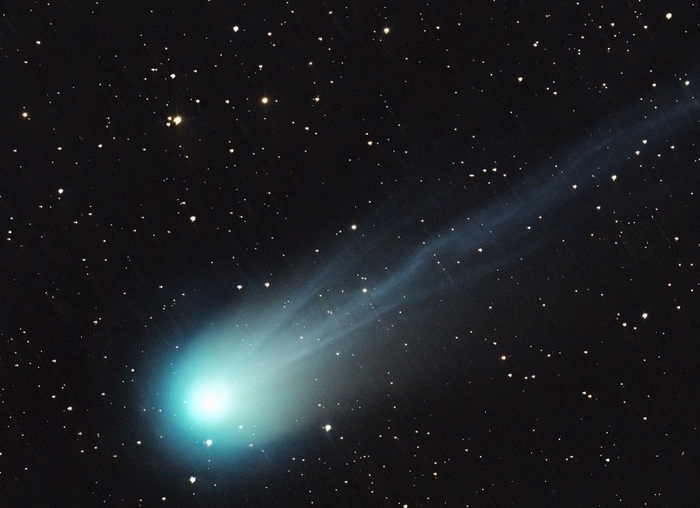In the summer of 2019, an unknown object from an unidentified star arrived in our solar system.
It was the first interstellar comet that had been observed so far.
No one knew what it was made of or how long it had traveled through interstellar space until it sped across the terrestrial sky.
Gennady Borisov, an amateur astronomer from Ukraine, was the first to observe it.
Until then, only one object from another solar system was known: the asteroid Oumuamua, whose stylized missile shape fueled speculation that it was a spacecraft.
These rare objects are exciting, as they are like a time capsule with information from other stars unreachable for human ships and possibly from the planets around them.
Our Sun and the planets that surround it, including Earth, travel through the Milky Way at 220 kilometers per second, enough to get from Madrid to Mexico City in 45 seconds.
During this trip it is possible that we pass so close to another solar system that a comet or an asteroid is absorbed by the gravity of the Sun or one of our giant planets like Jupiter or Saturn.
The new visitor can be trapped in their new home forever or traverse it and out of the new one into interstellar space.
This is how the astronomers who arrived Oumuamua and the comet discovered in 2019, named 2I / Borisov in honor of its discoverer, think.
It's tempting to think whether travelers like these can carry life-essential compounds from one star to another and perhaps seed them on other planets.
This week, two teams of astronomers present the results of Borisov observations made with two of the most powerful telescopes on Earth.
The first work tries to understand when this comet was formed and how degraded it is after its long journey through space.
Astronomers targeted Borisov with the Very Large Telescope, an optical observatory in Chile's Atacama Desert.
They compared the observations with those of other known comets.
The only one that looks like it is the Halle-Bopp, discovered in 1995 and which was so bright that it could be seen with the naked eye in the night sky for 18 months in a row.
Observations showed that Hale-Bopp was a fairly pristine object, that is, it kept the original material from which it was formed fairly intact.
This comet "may be the first totally pristine object of its kind"
Stefano Bagnulo, astronomer
The results of the current study, published today in
Nature Communications
, suggest that Borisov is even more intact.
In fact, those responsible for the work believe that it is the purest comet that has ever been observed.
Pure means old, so it is possible that its raw material is dust and gas very similar to the one that existed around the Sun shortly after its birth even before the planets existed, some 4,500 million years ago.
This comet "may be the first totally pristine object of its kind," explains Stefano Bagnulo, an astronomer at the Armagh Observatory in Northern Ireland and a co-author of the study, in a press release.
Those responsible for the work believe that since its formation, Borisov has never passed close enough to a star to degrade.
Bin Yang, an astronomer at the European Southern Observatory, analyzed Borisov with the ALMA radio telescope.
Their results, published in
Nature Astronomy
, show that the comet is made of particles and pebbles of different sizes that suggest that it is a mixture of materials from different regions of the solar system where it formed.
The researchers speculate that there were possibly gas giant planets in that solar system that attracted the comet with their force of gravity.
At the moment Borisov is located 10 astronomical units from the Earth, that is, about 1,400 million kilometers, explains Luisa Lara, a researcher at the Institute of Astrophysics of Andalusia.
"It will continue to drift away from us and will eventually exit the solar system in about 15,000 years," he says.
The astronomer was part of the science team on the
Rosetta
mission
, which showed that comets have oxygen and organic compounds.
This astrophysicist often remembers that the basic ingredients for life arrived on Earth from space, probably on board comets.
In these bodies, the presence of glycine has been demonstrated, an amino acid that could be one of the first building blocks for the formation of
living
molecules such
as RNA.
In his opinion, the two studies published today are in line with what is expected for a comet, because although it has formed in another solar system, it is coherent that its composition is similar to those that exist in ours.
You can follow
MATERIA
on
,
and
, or sign up here to receive
our weekly newsletter
.


/cloudfront-eu-central-1.images.arcpublishing.com/prisa/TQ73US57UFGWTIXR7C3BS2OTIA.jpg)










